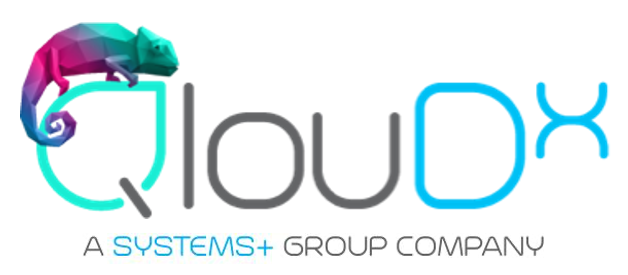Unlocking the Power of Data: Building a Modern Analytics Platform with Data Vault 2.0 on Azure

Welcome to the World of Modern Data Analytics!
In today’s fast-paced business environment, the need for timely and reliable data is more critical than ever. Imagine having a platform that not only meets this demand but also empowers your decision-makers with actionable insights. That’s where Data Vault 2.0 comes into play, revolutionizing how we build scalable business intelligence solutions on Microsoft Azure.
Understanding the Need: The Quest for Ready-to-Use Data
Business users crave data that’s ready for consumption, aiding their decision-making processes in data-driven organizations. Unfortunately, many existing systems fall short of delivering data on time and with the right quality and quantity.
Introducing Data Vault 2.0: A Modern Approach to Analytics
Data Vault 2.0 is not just a concept; it’s a game-changer in data warehousing and information delivery. It combines three key pillars – methodology, architecture, and modeling – providing the essential components needed to create a modern analytics solution.
Key Characteristics of a Modern Data Analytics Platform
Diverse Data Sources:
The platform is not confined to a single source or type of data. It extracts information from various internal and external sources, accommodating different loading cycles.
Transformation into Actionable Insights:
Raw data transforms with business logic to create useful information. However, the challenge lies in agreeing on how this information should look, given the diverse perspectives of end-users.
Distributed Platforms for Comprehensive Solutions:
Instead of siloed solutions, clients opt for an enterprise-wide effort, distributing the platform across environments. This can be for technical, legal, or organizational reasons, seamlessly integrating Azure Data Lake Storage and Synapse Analytics.
The Journey from Data Vault to Data Vault 2.0: A Brief History
Data Vault 2.0 has roots in solving real-world challenges faced by the U.S. government in building a decentralized data analytics platform. Originally known as Data Vault 1.0, it evolved into Data Vault 2.0, incorporating architecture, methodology, implementation practices, and a model.
Unlocking the Value of Data Vault 2.0
Data Vault 2.0 brings several benefits to the table, serving as the foundation for auditable solutions, ensuring security and privacy, supporting agile delivery, and seamlessly adapting to changes in source systems or business logic.
Understanding Data Vault 2.0 Reference Architecture
Foundation for Modern Analytics
Building on the requirements of a modern data analytics platform, Data Vault 2.0 establishes itself as a System of Business Intelligence. This reference architecture is not confined to the Azure cloud; it embraces distributed solutions spanning multiple environments, including multi-cloud scenarios or integration with on-premises solutions.
Beyond Relational Databases
Data Vault 2.0 breaks free from the limitations of relational databases. Its versatility extends to NoSQL databases, accommodating the processing of semi-structured and unstructured data.

Data Vault 2.0 Reference Architecture
1. Data Lake as the Staging Ground
Loading Data: Source systems contribute data, loaded into the data lake through ETL, Python scripts, or pipelines on the Azure platform.
Data Lake Structure: Leveraging Parquet or Avro files, the data lake’s functional structure proves most effective.
2. Why Data Lake over Relational Staging?
Adaptability: Unlike a transient staging area with relational databases, the data lake adapts to changing source system structures over time.
Source Systems Harmony: Filesystems in a data lake accommodate changes, alleviating the burden from the source system.
3. Embracing Master Data Management (MDM)
MDM as a Source: Master Data Management (MDM) is treated as just another source system, absorbed like any other data source.
4. Information Mart: Bridging the Gap
Definition: An information mart, akin to a data mart in legacy data warehousing, delivers user-defined, useful information.
Modeling: Typically uses dimensional models like star or snowflake schemas, driven by information requirements rather than source systems.
5. Bridging the Gap: EDW Layer
Raw Data Vault Layer: Models raw data into fundamental components – hubs, links, and satellites. Business Vault Layer: Applies business rules, modeling both results and the logic itself, bridging the gap between raw data and information

Implementing Data Vault 2.0 on Azure
1. Reference vs. Actual Architecture
Adaptability: While deviations from the reference architecture are allowed, they should be minimal, and justified, and ensure future adjustability and extension.
Cloud-Scale Analytics Framework: Azure provides templates simplifying the adjustment of the reference architecture to the tool stack.
2. Azure Templates for Implementation
Data Landing Zone Template: Offers data lake capabilities, deploying various zones including raw data lake, curated data lake, and workspace data lake zones.
Data Product Batch Template: Provides components for the EDW layer, including Azure Synapse and optional MySQL and PostgreSQL databases.
Data Product Streaming Template: Enables real-time capabilities with Azure Event Hub, IoT Hub, and Stream Analytics services.
Data Product Analytics Template: Facilitates data analysis in both the EDW layer and data lake, often using AzureML for data mining tasks.
3. Technology Stack on Azure
Components: Network, governance, and consumption services are provided by the Data Management Zone template.
Governance: Microsoft Purview supports data governance, allowing teams to define glossaries, classify sensitive data, and automate the generation of the Data Vault 2.0 model and loading procedures.
Consumption Services: Services like Microsoft PowerBI are integrated for dashboarding.

Conclusion
Embark on a journey into modern data analytics with Data Vault 2.0 on Azure. This architecture, not confined to Azure, embraces versatility, adapting to changing source structures and processing various data types. Bridging the gap between raw data and information, the reference architecture leverages Azure templates for implementation, providing adaptability and simplifying adjustments. The technology stack integrates data lake capabilities, EDW components, real-time capabilities, and analytics services.





